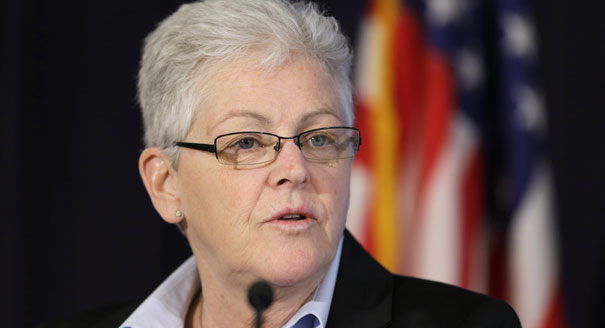Competing ‘energy transition’ visions of Big Oil, EPA
Energy transitions take 50 to 75 years, regulators need to be patient
Outgoing EPA head Gina McCarthy says the clean energy transition can’t be stopped. API head Jack Gerard says the real energy transition is from coal to natural gas. Who’s right?
Both of them, as it turns out.
My go to expert on energy transitions is Fred Beach, assistant director for energy and technology policy at the Energy Institute, University of Texas Austin. Prof. Beach spent 25 years in the US Navy as a submariner and describes himself as a gear-head who loves old cars.
He’s not hugging trees in his spare time.
But he does drive a Chevy Volt, a car he describes as “one of the most finely engineered pieces of gear I’ve ever driven.
“It’s just amazing how well the Chevy engineers did in coming up with that car and that concept and the way it seamlessly performs between the engine, the all-electric, the hybrid mode and the plug in range it gives you. I never would’ve seen myself buying that car,” he said in an interview.
Prof. Beach estimates that in 50 years, 70 to 80 per cent of the US automotive fleet will be electric vehicles. EV technology cost curves are bending downward, consumer value is trending upward, and entrepreneurs are experimenting with new business models that could provide market disruption, especially in huge urban markets, where issues like traffic congestion and air quality are most pressing.
The EV future described by Prof. Beach is essentially the future of all clean energy technology: wind, solar, tidal, battery storage, energy efficient buildings, industrial energy efficiency, lighting, etc. All are slowly being transformed by scientific and technological innovation.
So, Gina McCarthy is correct when she says: “Folks, clearly there is more going on in our world and our energy sector than the Clean Power Plan can account for. … This is all about the energy transition that’s already happening…The clean energy economy, folks, that train has left the station.”
But the clean energy train is slow and must traverse plenty of steep mountains to reach its destination.
And while that train is chugging along, expect existing technologies – especially those based upon oil and natural gas – to fight hard for their historic market share.
So, Gerard is also correct when he says: “What we have now found through market conditions and through the American energy renaissance is that we can in fact be a leader in world production and at the same time address climate concerns. There’s a good practice here that should be looked at, and we would encourage the incoming administration and, frankly, our allies around the world to look at the US success story and let’s model energy policy around what really works as opposed to theoretical, ideological conversations.”
If we adopt Prof. Beach’s 50 to 75 year timeline for the adoption of new technologies, we can see that in the short-term, natural gas plus growing renewable energy will continue to lower American energy emissions, as it has done for the past few years. If Prof. Beach is correct, then sometime between 2050 and 2075 renewables will become efficient enough to supplant natural gas in a significant way.
But the market will decide when that transition happens.
Somewhere between McCarthy’s heavy-handed regulatory approach and Gerard’s insistence on strictly market-based strategies, there is a happy medium where the federal and state governments use smart policy to make the transition to new forms of energy as efficient as possible.










